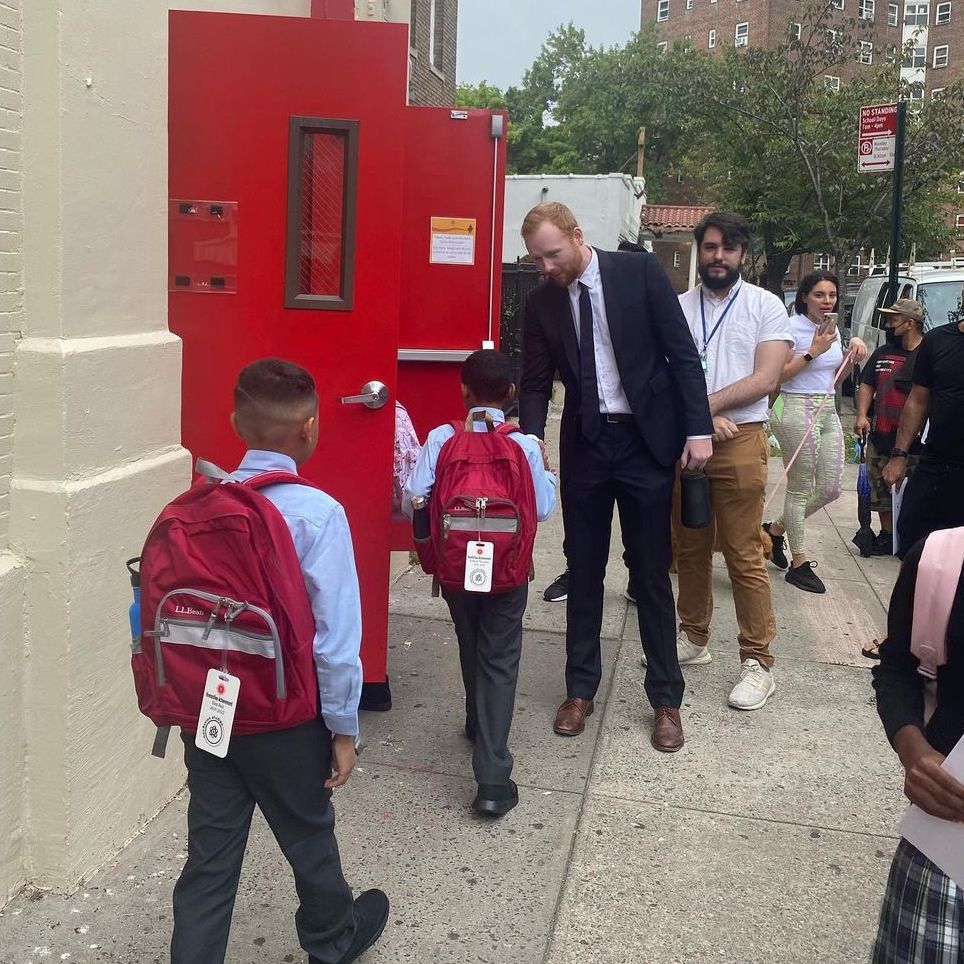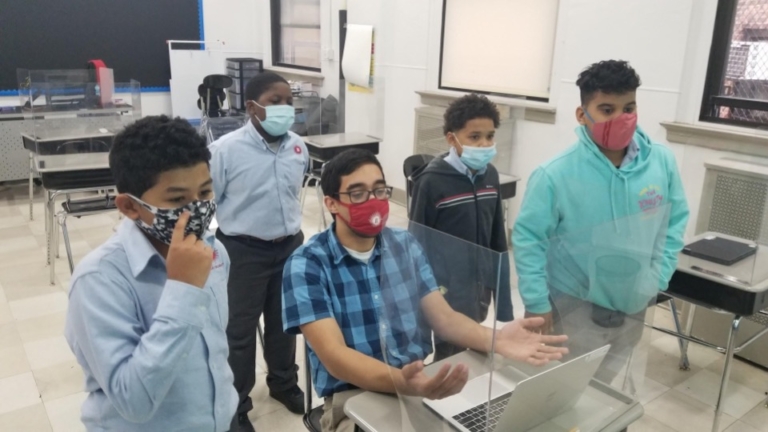If you happened to be walking the halls of Brilla Veritas Middle School, there’s a good chance you’d run into the principal, Mr. Patrick McGowan, encouraging scholars from his portable loudspeaker.
“I told him he reminded me of that guy on the subway who always carries a speaker,” says Ms. Diaz, one of Brilla’s fifth grade teachers, with a chuckle. “He’s very enthusiastic.”
And with good reason. After only one semester, 85% of BVMS scholars have made significant improvements, specifically on the school’s internal English Language Arts Interim Assessment, also known as the ELA IA.
“All of the credit goes to our teachers,” says Mr. McGowan. “They were really working tirelessly behind the scenes.”
From preparing lessons, to diagnosing scholars’ work, to really digging into the data, the teachers at BVMS have worked hard to get to know their scholars and help them improve.
“All of the credit goes to our teachers,” says Mr. McGowan. “They were really working tirelessly behind the scenes.”
From preparing lessons, to diagnosing scholars’ work, to really digging into the data, the teachers at BVMS have worked hard to get to know their scholars and help them improve.

But why do these internal test scores matter in the first place?
“It’s important for our scholars to get good results because tests are something in this world that matter—SAT results down the line are going to get them into colleges, and results on assessments are going to get them into specialized high schools,” Mr. McGowan explains. “Not only do test scores matter, but reading and writing skills matter. I believe that if students are able to read, write, and speak at high levels, the world is their oyster.”
At the beginning of the school year—following a significant period when students weren’t able to access in-person learning due to the Covid-19 pandemic lockdowns—a total of 14% of incoming scholars at the new middle school had a passing score for the first ELA IA back in November 2022.
This semester, 59% of scholars achieved a passing score, with 14 scholars achieving a score of 89% or higher. What incredible growth!
Ms. Diaz, who co-teaches fifth-grade Math and English with Ms. Jimenez, says they created a homework packet with supplemental material to help students catch up from loss of in-person learning time over the past two years.
Yet the other secret to their success was the buy-in and support from parents.
“They are really good at communicating with us,” she says, claiming that parents will often send texts to teacher cell phones that are designated for school purposes only. “We know parents will back us up.”
Although the dramatic improvement in test scores may be shocking, this answer isn’t—Brilla schools are committed to a robust school culture where school leadership, teachers, and parents all have a role to play when it comes to providing children with a holistic education.
In fact, as a principal who is new to the Brilla family, the buy-in from teachers and students is what has, so far, impressed Mr. McGowan the most.
“They [teachers] are doing a great job of creating a really healthy school culture around learning and joy in learning,” he says, “and I think that’s how schools are successful. If you can make achievement fun and exciting, then the sky is the limit.”



